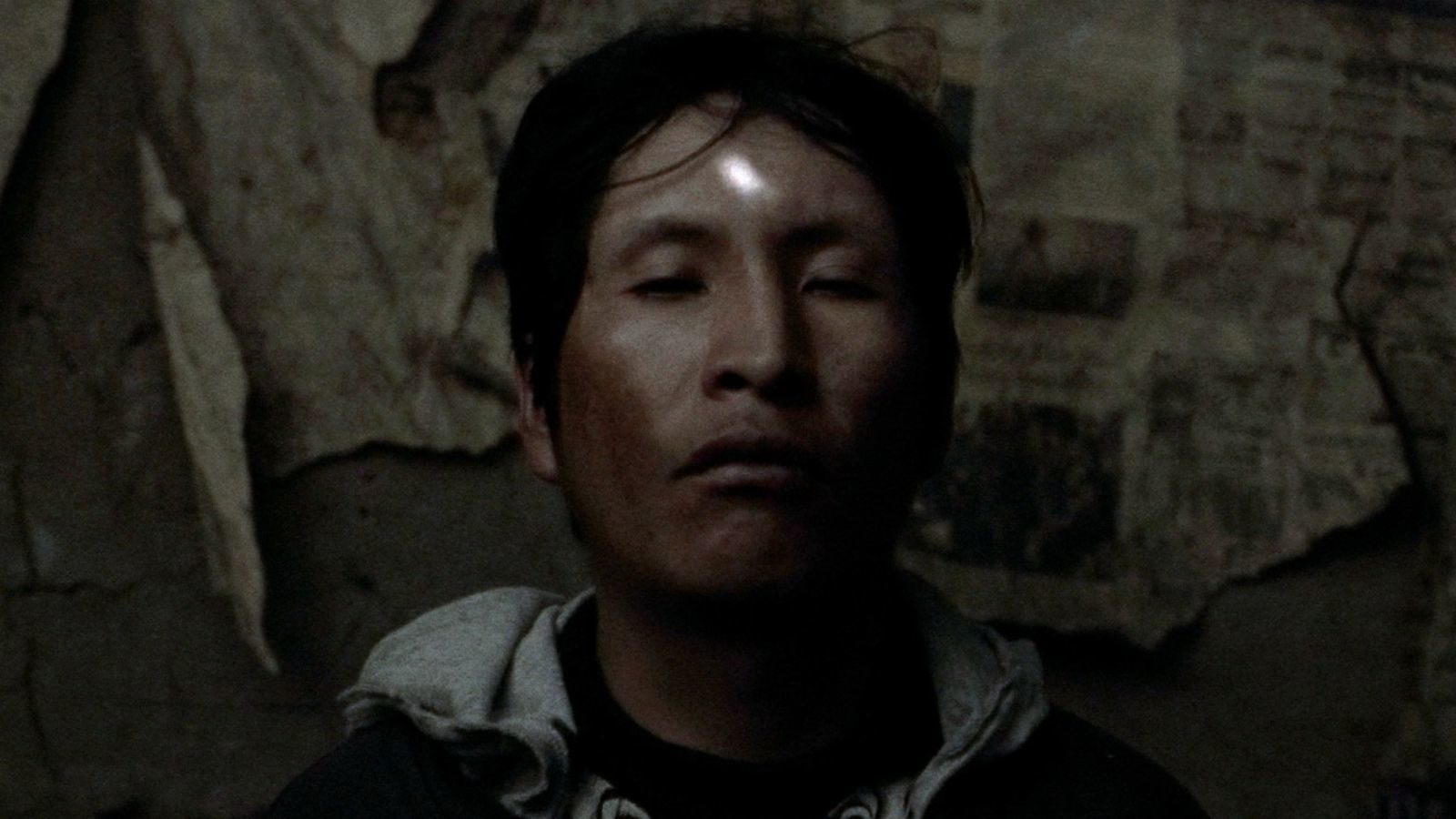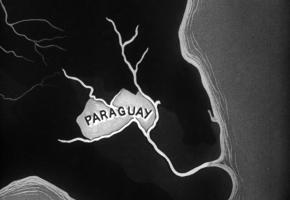Born in Bolivia in 1984, Kiro Russo studied film in Buenos Aires and THE GREAT MOVEMENT is his second feature film after DARK SKULL (2016). Interestingly, Russo has continued to expand the story of the same character, Elder Mamani, played by Julio César Ticona, who first appeared in ‘Dark Skull’. It invites the question as to whether he is contemplating a trilogy.
In Kiro Rossi’s first feature, ‘Dark Skull’, when Elder’s father dies, Elder moves to live with his grandmother in a mining village. There he is given a job in the mine, replacing his father. However, his subsequent chaotic behaviour is so reckless that it leads him to be removed from the mine following a petition by his fellow workers.
Now, in ‘The Great Movement’, Elder and two work colleagues, Gallo (Israel Hurtado) and Gato (Gustavo Milán Ticona), now unemployed, spend a week walking to La Paz, to join a protest of miners demanding their jobs back. They search for temporary work in the local market, and all the while, Elder is slowly ailing with a mysterious pulmonary sickness that doctors cannot identify. He deteriorates and is unable to fulfil his share of the temporary work they find, to the chagrin of his two friends.
An idiosyncratic character, Mama Pancha (the delightful Francisca Arce de Aro) takes him under her wing and declares that she is his godmother, although he has no recollection of her at all.
But, among the main characters in ‘The Great movement’, is the city of La Paz itself. Russo describes it as the third main character in his movie. Using zoom techniques and slow meticulous tracks and pans, he introduces us to this vast, sprawling city, its people and its sounds.
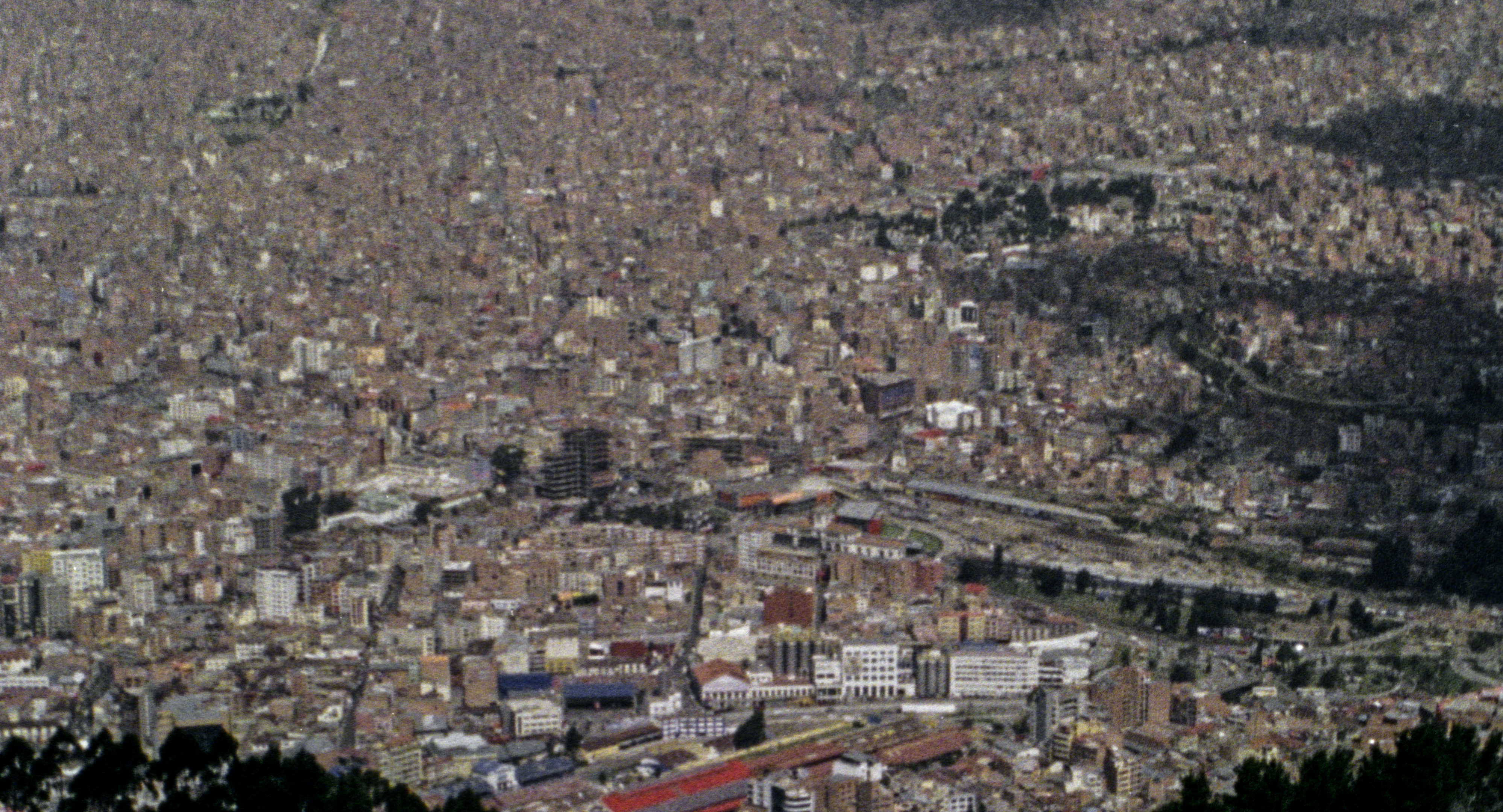
City of La Paz
Russo has stressed the huge importance he has given to the soundscape of La Paz, so much so that the sound mix becomes like an urban symphony, built up of from a combination of the cacophony of honking horns and traffic, to the sounds of people, their cries and voices. La Paz, comes across as a vibrant city that is bursting at the seams. It is chaotic, whole areas are covered in unfinished structures, while a maze of soviet-style tower blocks create claustrophobic cement jungles, built so close to one another that there is no more sky and no more views. The buildings overlook each other and appear as clogged as the roads with their honking traffic jams, the only gap allows a polluted stream to flow past.
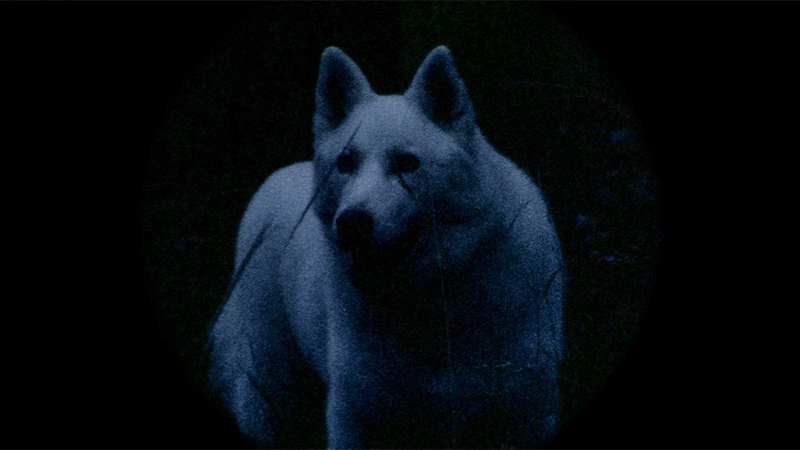
A spirit or a real wolf-dog?
At street level, the narrow, cobbled alleyways take us back to Inca times and we are thrust into a world not unlike a Bolivian ‘Blade Runner’. Here Russo stages his action in a market area. Here are the people who inhabit this sprawling city. These are people who, surrounded by a nightmarish atmosphere, still manage to maintain an attachment to Mother Earth (Pachamama) and humanity.
The market becomes like a metaphor of what lies out of sight beyond. We have the three lads trying to eke out a hard living, carrying heavy weights for low pay. It is also illustrated by a group of women (coyas) who guard their market stalls, full of life, warmth and humour.
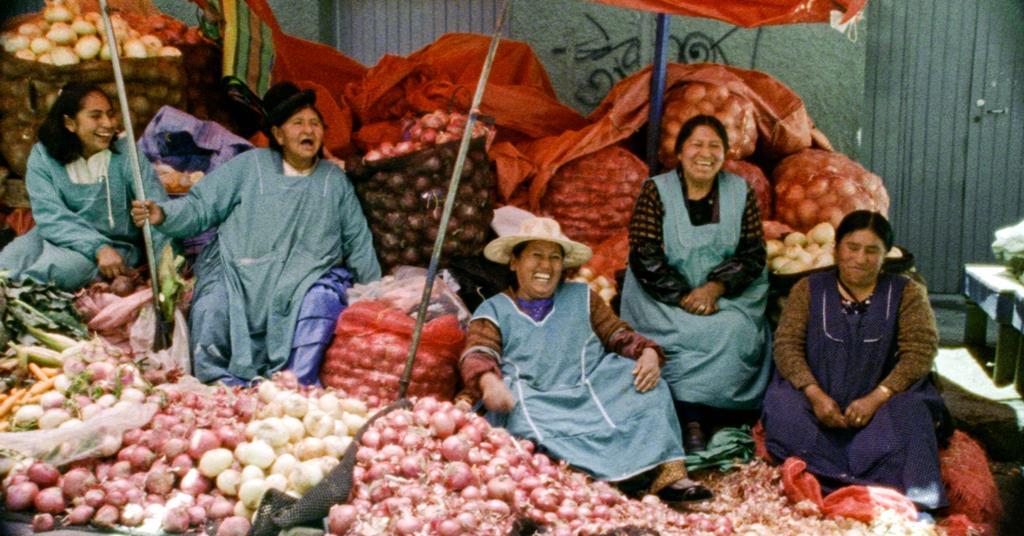
Market ladies Marcela Chambi, Marlene Pinto and Carmen Quisbert.
These market ladies tease the intriguing local tramp Max (Max Bautista Uchasara) because he is smelly as he lives rough. Max, part shaman, part healer lives the local forest, where he forages for medicinal herbs to prepare traditional remedies. There is a powerful kindness in the way people treat each other. The character of Max introduces a meditative element, as he is followed often by a white wolf- dog that is like a spirit of the woods. Max is known for his capacity to see, so he reads cards and persistently predicts that La Paz will become dust. Spiritually or physically? That is never clear.
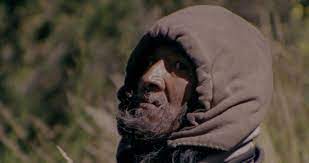 Max Bautista Uchasara as Max
Max Bautista Uchasara as Max
But the sick Elder continues to get worse, doctors cannot help him, only the shaman remains, can the old ways hold any sway in this modern world?
There is a lot of symbolism and the film uses a collage of images to introduce many elements, some surreal, some touching on magic realism. This film does not attempt to provide a linear narrative, it plays with inter-crossing events that gradually build up a resolution. There is an echo of another film, The Fever, by Brazilian director Maya Da-Rin, where a worker also falls prey to a mysterious sickness that can only be cured when returns to his ancestral lands.
“I wanted to make a film about La Paz, with characters who could provide a singular point of view upon the city. I found these characters in Elder, a young miner, and in Max, a tramp whose peculiar positions in the society allowed me to observe the city as a whole, to see its systems, architecture and changes. Freely inspired by their lives, I imagined this story of illness and healing to take us into the heart of the social fabric of this city and reveal the lives of its invisibles.” - Kiro Russo
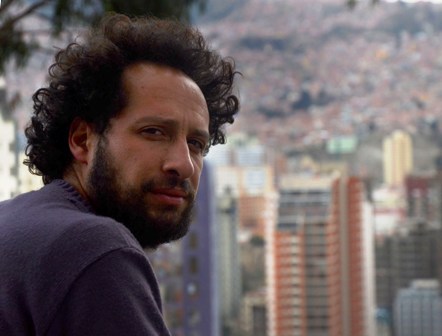 Kiro Russo in La Paz
Kiro Russo in La Paz
Russo is aware that the film being so unconventional poses risks, but he was determined to challenge his audiences to see other levels, from the mountains that surround the city as if they were observing it and its hard everyday life, to the cinema verité effect, in the use of photographic techniques. Much like his previous film’ Dark Skull’, this story seems to fluctuate in a dreamland between fact and fiction.
THE GREAT MOVEMENT (2021)
SCREENS AT MANCHESTER FILM FESTIVAL 14 MARCH
AND WILL BE RELEASED IN SELECTED UK CINEMAS from 15 APRIL 2022
for more info: https://www.institut-francais.org.uk/cine-lumiere/whats-on/new-releases/the-great-movement/
The film was the winner of the Venice Horizons Special Jury Prize for Best Film at the 2021 Venice Film Festival, and has been confirmed as Bolivia’s official submission for the Oscars for 2022.
Writer Director Kiro Russo / Producers: Kiro Russo / Pablo Paniagua/ Alexa Rivero / Sound Designers: Marcelo Guzmán/ Mauricio Quiroga / Cinematographer: Pablo Paniagua / Cast: Elder: Julio César Ticona / Gallo: Israel Hurtado/ Gato: Gustavo Milán Ticona/ Mama Pancha: Francisca Arce de Aro/ Max: Max Bautista Uchasara .


